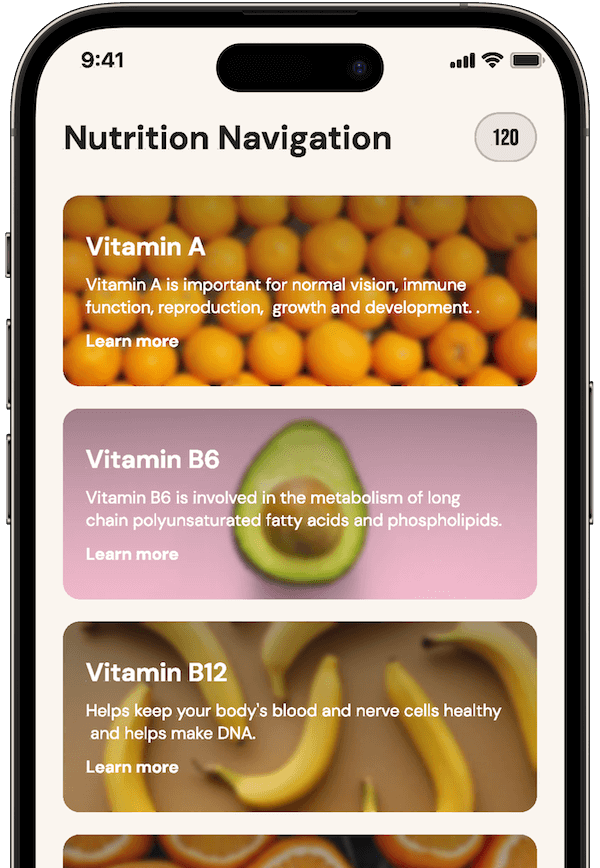Dealing with the relentless challenges of adenomyosis has been a daunting journey for me. Picture this: early in my journey, I was overwhelmed by the pain and heavy bleeding, frantically searching for answers like a mad woman.
One day, while sprawled on the couch in utter exhaustion, it hit me—what if exercise could be the knight in shining armour for my uterus? It turns out, one of the most helpful changes I made involved incorporating exercise into my routine. In this article, we’ll dive into how exercise can influence adenomyosis and what you can do to manage your symptoms.
Yes, exercise can help reduce adenomyosis symptoms. Regular physical activity can alleviate pain, reduce inflammation, and improve hormonal balance, making it a valuable component of an adenomyosis management plan. However, it’s important to choose the right types of exercise and avoid overexertion to prevent flare-ups.
How Does Exercise Affect Adenomyosis Symptoms?

Can Exercise Help Reduce Adenomyosis Pain?
Regular exercise can help reduce pain associated with adenomyosis. Physical activity stimulates the release of endorphins, the body’s natural painkillers, which can help alleviate chronic pain. Studies have found that women who engaged in regular exercise experienced less menstrual pain compared to those who were inactive.
Can Exercise Reduce Inflammation in Adenomyosis?
Exercise has anti-inflammatory effects, which can be beneficial for adenomyosis. Inflammation plays a significant role in worsening adenomyosis symptoms, and reducing inflammation can help manage pain and discomfort. Activities like swimming, yoga, and walking can lower inflammatory markers in the body, providing relief from symptoms.
Does Exercise Influence Hormonal Balance in Adenomyosis?

Exercise helps regulate hormones, which is crucial for managing adenomyosis. Physical activity can influence several key hormones that play a role in this condition:
Oestrogen
High levels of oestrogen can worsen adenomyosis symptoms, such as pain and heavy bleeding. Exercise helps reduce body fat, which lowers oestrogen production. Aerobic exercises like running, swimming, and cycling are particularly effective.
Progesterone
Progesterone helps balance oestrogen levels. Regular exercise can promote a healthier balance between these hormones. Strength training and resistance exercises are beneficial in stimulating progesterone production.
Cortisol
Cortisol, the stress hormone, can negatively impact hormone balance. High cortisol levels can worsen adenomyosis symptoms. Exercises like yoga, Pilates, and moderate aerobic activities help lower cortisol by promoting relaxation and reducing stress.
Insulin
Insulin regulates blood sugar levels, and high levels can increase oestrogen production and inflammation. Regular exercise improves insulin sensitivity, helping maintain stable blood sugar levels. Combining aerobic exercises with strength training is particularly effective.
Endorphins
Endorphins are natural painkillers. Exercise stimulates their release, alleviating adenomyosis-related pain. Activities such as running, swimming, and cycling boost endorphin levels, providing pain relief and improving well-being.
Thyroid Hormones
Thyroid hormones regulate metabolism and energy levels. Exercise supports thyroid function, preventing hormonal imbalances that can worsen adenomyosis. Both aerobic exercises and strength training positively affect thyroid hormone levels.
Growth Hormone
Growth hormone aids in tissue repair and regeneration. Regular exercise stimulates its production, helping heal uterine tissue affected by adenomyosis. Resistance training and high-intensity interval training (HIIT) are effective in promoting growth hormone release.
A balanced exercise routine, including both aerobic and strength training exercises, can positively impact hormonal health. By addressing these key hormones, regular physical activity can help manage adenomyosis symptoms more effectively.
What Types of Exercise Are Best for Adenomyosis?

Choosing the right types of exercise is essential for effectively managing adenomyosis symptoms. The goal is to engage in activities that provide health benefits without exacerbating symptoms. Here are some of the best types of exercise for individuals with adenomyosis:
Is Low-Impact Exercise Good for Adenomyosis?
Low-impact exercises are particularly beneficial for those with adenomyosis. These activities improve cardiovascular health, help maintain a healthy weight, and reduce the risk of symptom flare-ups by avoiding excessive strain on the body. Examples include:
- Walking: A simple, accessible way to improve cardiovascular health and reduce stress. Walking at a brisk pace for 30 minutes a day can help manage weight and support overall wellbeing.
- Swimming: Provides a full-body workout while minimising joint stress. The buoyancy of water can help relieve pain and discomfort associated with adenomyosis.
- Pilates: Chat to your pilates instructor before you begin class and let them know where you are at with your body. Slow and controlled movement is what I personally found to be the most beneficial and I can not stress enough to go at your own pace!
Is Strength Training Beneficial for Adenomyosis?
Strength training can also be advantageous for managing adenomyosis symptoms. Building muscle and improving overall body strength supports hormonal balance and reduces pain. Effective strength training exercises include:
- Light Weights: Using light weights or resistance bands can help tone muscles without overexertion. Focus on exercises like bicep curls, tricep extensions, and shoulder presses.
- Bodyweight Exercises: Exercises like squats, lunges, and push-ups build strength and improve muscle tone. These can be modified to suit individual fitness levels.
- Resistance Bands: Great for low-impact strength training, resistance bands can be used for various exercises targeting different muscle groups.
Can Yoga and Stretching Help Alleviate Adenomyosis Symptoms?
Yoga and stretching exercises are particularly helpful for those with adenomyosis. These activities promote relaxation, reduce stress, and improve flexibility. Specific poses and stretches can target the pelvic region, alleviating cramps and discomfort. Effective yoga and stretching exercises include:
- Yoga Poses: Poses like Child’s Pose, Cat-Cow, and Reclining Bound Angle Pose help relax the pelvic muscles and reduce pain. Practising deep breathing during yoga further enhances relaxation and stress relief.
- Stretching Routines: Daily stretching routines focusing on the lower back, hips, and thighs improve flexibility and reduce muscle tension.
- Mindfulness and Meditation: Integrating mindfulness practices and meditation into yoga sessions helps manage stress, a known trigger for adenomyosis symptoms.
These exercises improve overall health by balancing hormones, reducing inflammation, and relieving pain. Regular physical activity can significantly enhance the quality of life for those with adenomyosis. Always consult with a healthcare provider before starting any new exercise regimen to ensure it’s appropriate for your individual health needs.
Are There Exercises to Avoid with Adenomyosis?
While exercise is generally beneficial, some types can exacerbate adenomyosis symptoms. High-intensity workouts may worsen symptoms due to the physical stress they place on the body. Activities like heavy lifting, high-impact aerobics, and intense cardio can lead to increased pain and bleeding.
Women with adenomyosis should avoid exercises that involve heavy abdominal pressure or jarring movements. It’s best to listen to your body and modify exercises as needed to avoid discomfort and prevent symptom flare-ups.
How Much Exercise is Recommended for Adenomyosis?

Finding the right balance in your exercise routine is key to managing adenomyosis. Aim for at least 30 minutes of moderate exercise most days of the week. Consistency is more important than intensity, as regular, gentle exercise can help manage symptoms without causing additional stress to the body.
However, overexertion can aggravate adenomyosis symptoms, so it’s important to avoid pushing yourself too hard and allow for adequate rest and recovery. Pay attention to your body’s signals to prevent exercise from becoming counterproductive.
What Other Lifestyle Factors Can Help Reduce Adenomyosis Symptoms?
In addition to exercise, focusing on nutrition can play a crucial role in managing adenomyosis. A balanced approach to food rich in anti-inflammatory foods can support overall health and reduce symptoms. Incorporating foods high in omega-3 fatty acids, such as fish and flaxseeds, along with plenty of fruits and vegetables, can help manage inflammation.
The Unprocessed App can be a valuable tool for tracking your nutrient intake, monitoring symptoms, and identifying patterns. By logging your food and supplement intake, you can ensure you’re meeting your nutritional needs and making informed decisions about your approach to food. Join our waitlist for early access.
FAQs about Exercise and Adenomyosis
Can Exercise Cause Adenomyosis?
No, exercise does not cause adenomyosis. However, it can help manage the symptoms by improving hormonal balance and reducing inflammation.
Is Swimming a Good Exercise for Adenomyosis?
Yes, swimming is a low-impact exercise that can be beneficial for adenomyosis. It provides a full-body workout while minimising stress on the joints and pelvic region.
Can Exercise Help with Heavy Menstrual Bleeding from Adenomyosis?
Regular exercise may help regulate hormones and reduce heavy menstrual bleeding associated with adenomyosis. Aerobic activities and strength training can support overall hormonal health.
Should I Consult a Doctor Before Starting an Exercise Program for Adenomyosis?
Yes, it is always best to consult with a healthcare provider before beginning any new exercise regimen. This ensures that the exercises are safe and appropriate for your specific condition.
Closing Thoughts
Exercise can significantly reduce adenomyosis symptoms by alleviating pain, reducing inflammation, and improving hormonal balance. Choosing low-impact activities and maintaining a balanced routine is key to managing the condition effectively. Incorporating regular exercise into your lifestyle can be a game-changer for managing adenomyosis.

Coupled with a healthy approach to food and stress management techniques, exercise can improve your quality of life and help you manage symptoms more effectively. Use tools like the Unprocessed App to track your progress and make informed decisions about your health—because let’s be honest, who doesn’t want their uterus to be just a bit happier? After all, a happy uterus makes for a happier you, and who wouldn’t want that? Unprocessed App is coming soon, so join our waitlist today!



